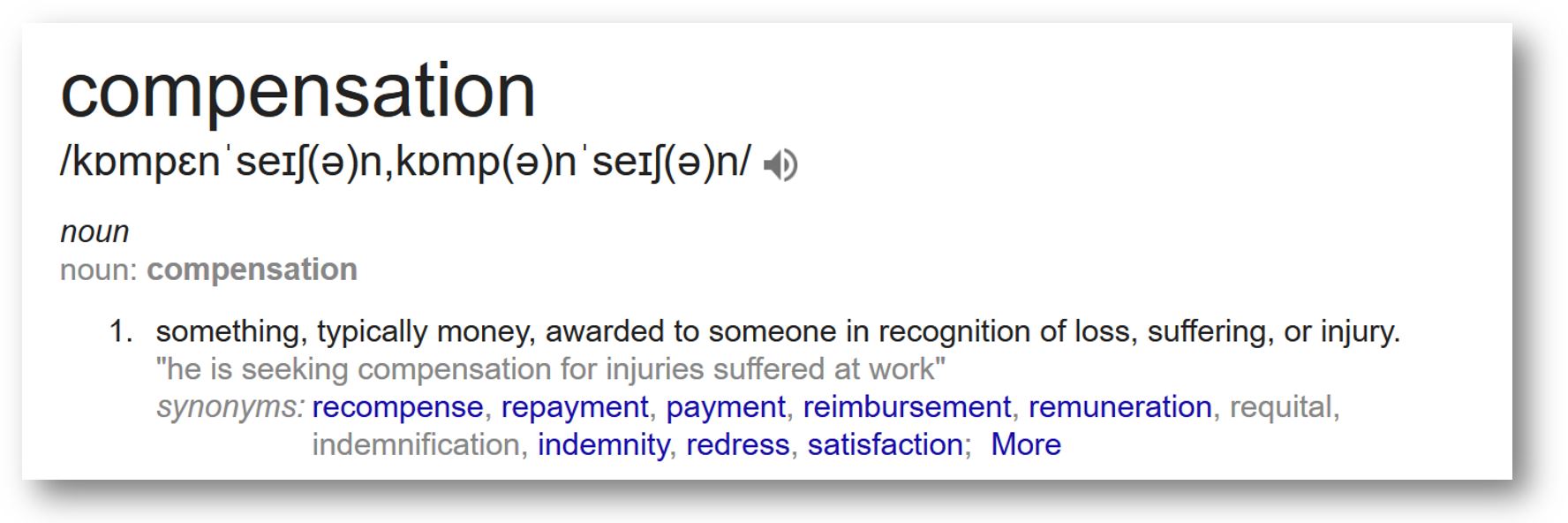Different forms of compensation include wages, bonuses, company stock options, allowances for housing, travel etc. The compensation provided helps in motivating employees build their career and ensure that they are committed to achieving the company goals. Compensation strategies are a vital part for organizations to ensure that talented employees are not only retained but engaged. This becomes one part of the overall plan meant to guide an organization towards its goals and due diligence must be done to ensure that a right compensation strategy is adopted for the best outcome.

Today's workers no longer foresee job security; they expect to be rewarded in some manner for excellent work, especially if the remuneration helps enhance the marketability of their skills. In a day and age where organisations are struggling to keep employee attrition down, innovative compensation strategies and a paradigm shift in the approach to compensation management has led to a more professional and mutually beneficial relationship between employees and the organization.
Compensation strategies are a vital part for organizations, to ensure that talented employees are not only retained but engaged.
The conventional compensation strategy guaranteed employee loyalty and commitment in exchange for implicit promises of lifetime employment and tenure-based advancement. Today’s compensation strategy requires that companies offer their work forces explicit time bound exchanges of rewards for performance, particularly rewards that enhance an individual's marketability as well as development.
Here are "Five strategies for Engaging Employees through Compensation"
1. Paying for Competencies

Analyse key organizational positions to determine what competencies in employees differentiate the average from outstanding in terms of performance. Particularly those competencies most critical to achieving the organization's future focused objectives. Once determined, these competencies offer a benchmark against which to compensate employees.
In addition to expanding position, salary bands, competency-based compensation might involve merit-based pay, spot bonuses, year-end bonuses, stock options, or other rewards predicated on outstanding performance- instead of hierarchical advancement.
2. Offering "Proxies" for Promotion.jpg) In today's delayered organizations, traditional symbols of advancement - bigger budgets, more subordinates, etc.- are now redundant as indicators of success. Instead, streamlined organizations can identify typical compensation packages associated with senior positions, and then incorporate these benefits into lower-level positions. In other words, talented employees can be given a "proxy" for promotion. This proxy might be an opportunity for professional development or a chance to increase one's visibility, responsibility, or authority.
In today's delayered organizations, traditional symbols of advancement - bigger budgets, more subordinates, etc.- are now redundant as indicators of success. Instead, streamlined organizations can identify typical compensation packages associated with senior positions, and then incorporate these benefits into lower-level positions. In other words, talented employees can be given a "proxy" for promotion. This proxy might be an opportunity for professional development or a chance to increase one's visibility, responsibility, or authority.For instance, instead of being given traditional promotions, star performers might be asked to meet with important customers, participate in strategic planning sessions, make presentations to senior management, represent the company at professional gatherings, or work on high impact projects.
3. Rewarding Employees to take ChargeEmployees, must seize the initiative to get ahead and rewarding them to do so can result in engagement as well as skill development of the workforce. When an incentive is coupled with tools and resources to facilitate career and professional development, there is an opportunity and reward on offer which most employees in the modern workplace realise is a win-win situation and generally leads to higher engagement in the workplace. As there is a clear desired result which the company demands along with a reward attached to it, employees are more engaged in trying to achieve it because of the reward and added benefit of personal growth.
In an effort to direct the organization towards its strategic goals, companies can also define values and behaviour that contributes to this goal and reward employees who consistently exhibit these values and behaviour. This strategy is effective when there is a need to reinforce an organization’s company culture into it its employees and also becomes a useful tool to build morale.
A fair compensation system at work which shows transparency in current bonuses, wages and any benefits linked to the positions of different employees and their contribution to the workforce helps promote engagement. Employers should provide role models or ideal characters they prefer and also demonstrate the compensation they offer to such role models, which helps employee understand the ideal type of behaviour to duplicate which ensures engagement and productivity.
Perhaps the key challenge lies in eradicating the entrenched, hierarchy-based notions of success, which lead to unnecessary layers of management in the first place. It is established today that a good compensation plan within the context of a total reward system is one that provides a method for reinforcing the value-added contributions of each individual through the application of their talents, the growth of their capabilities, and the outcome of their actions consistent with the key success factors of the organization. While specific compensation plan designs will vary according to company and industry, and can be based on culture, management style and overall objectives, the basic objective should remain the same increased retention of valuable employees, better engagement and higher productivity for the organization.
Posted in : Employee Engagement
Views : 46002
Leave a Comment
Hey there !
Author Details
Related Blogs
Popular Tags
Subscribe Now

Related Blogs
More fromEmployee Engagement







